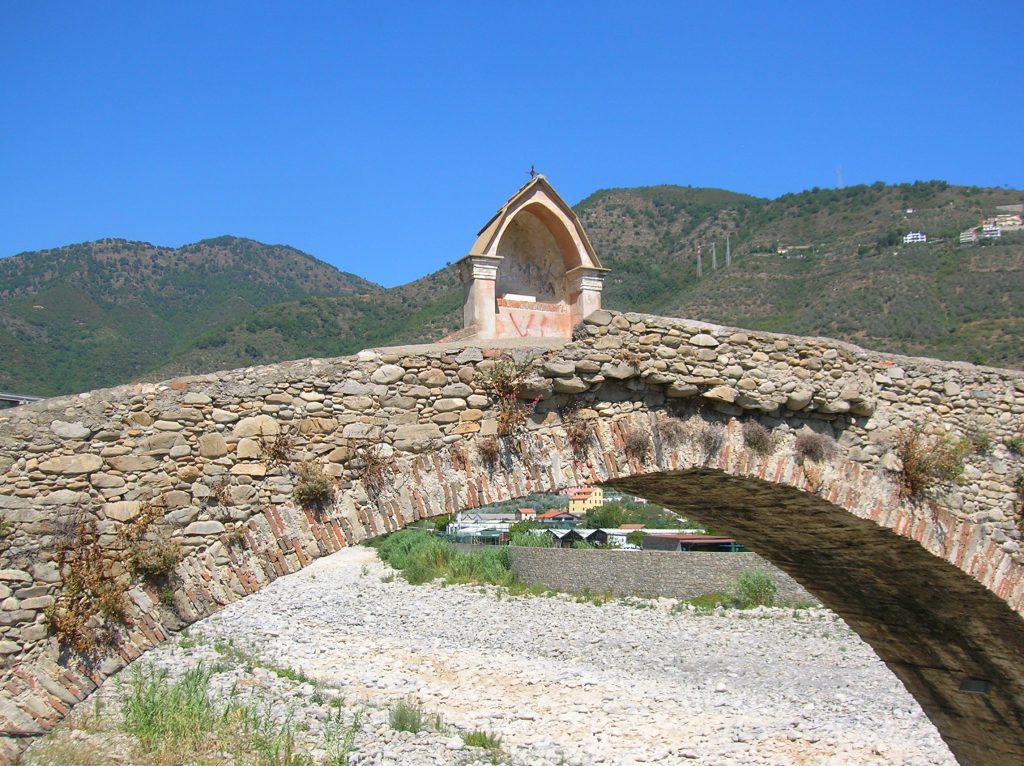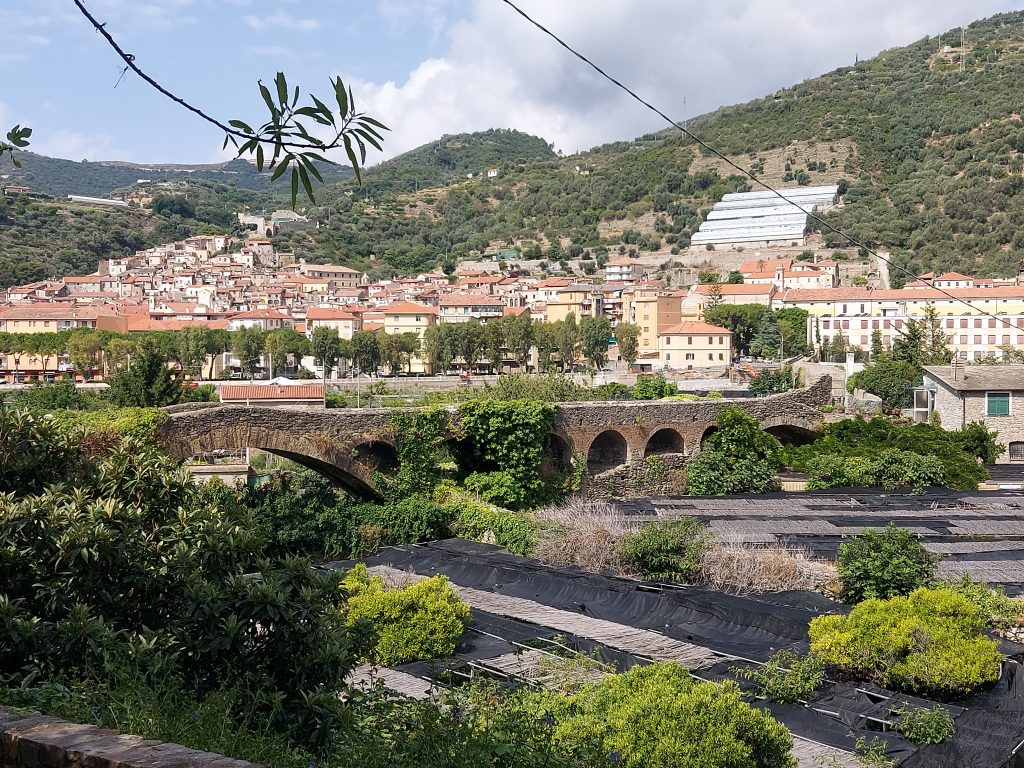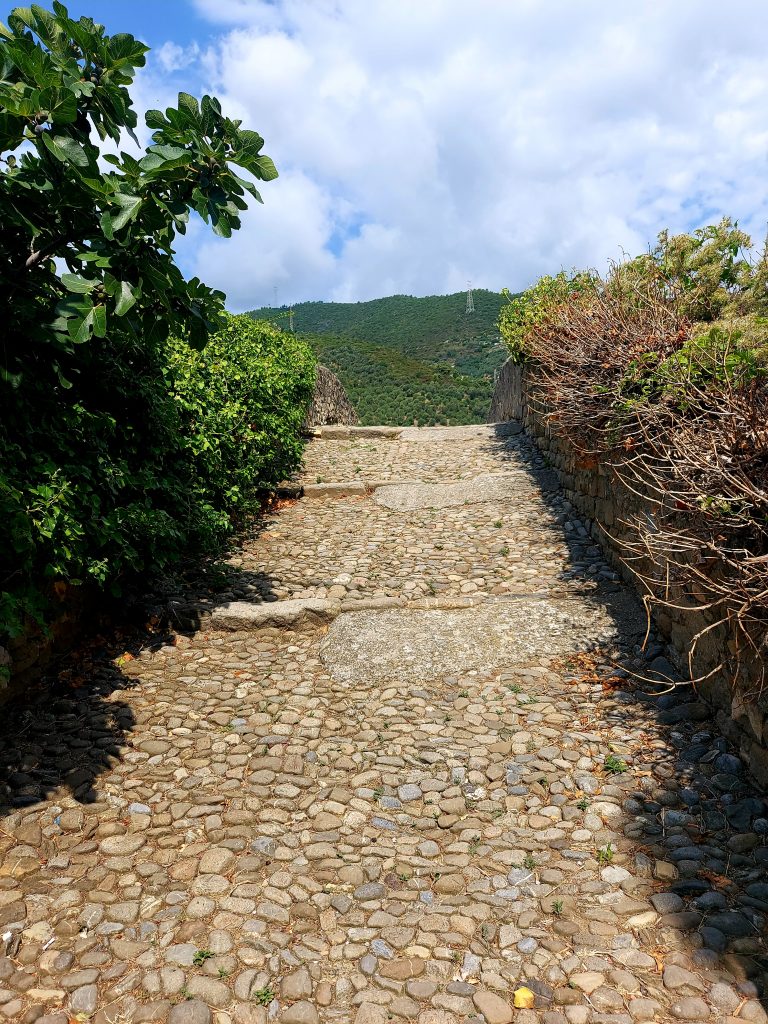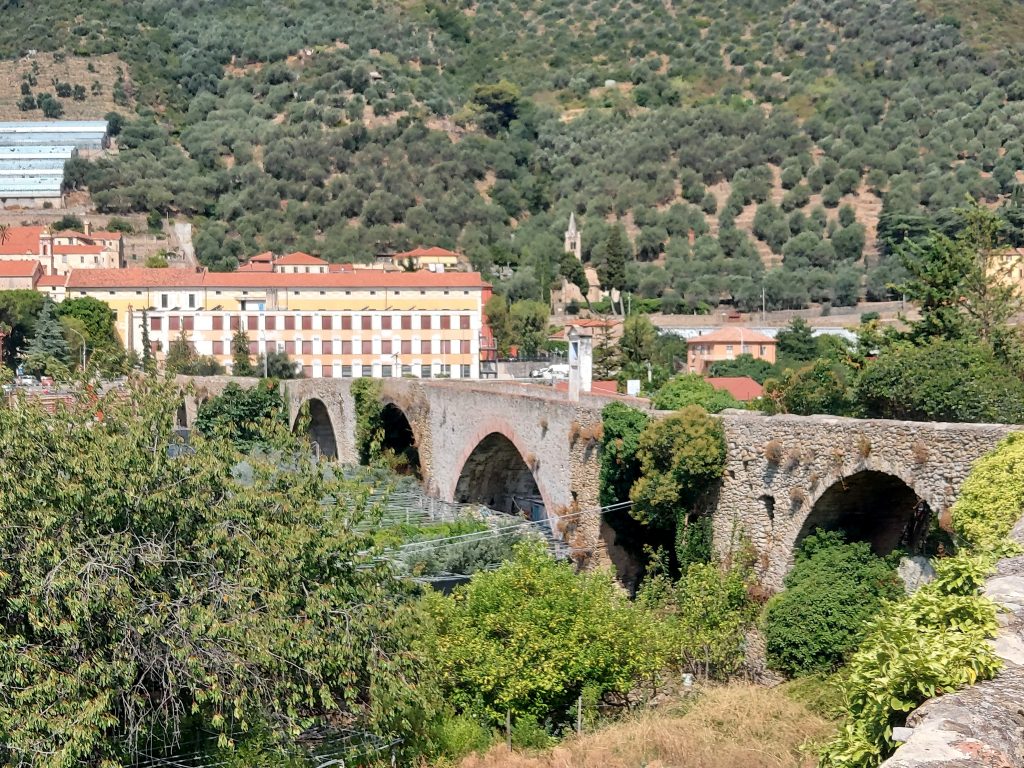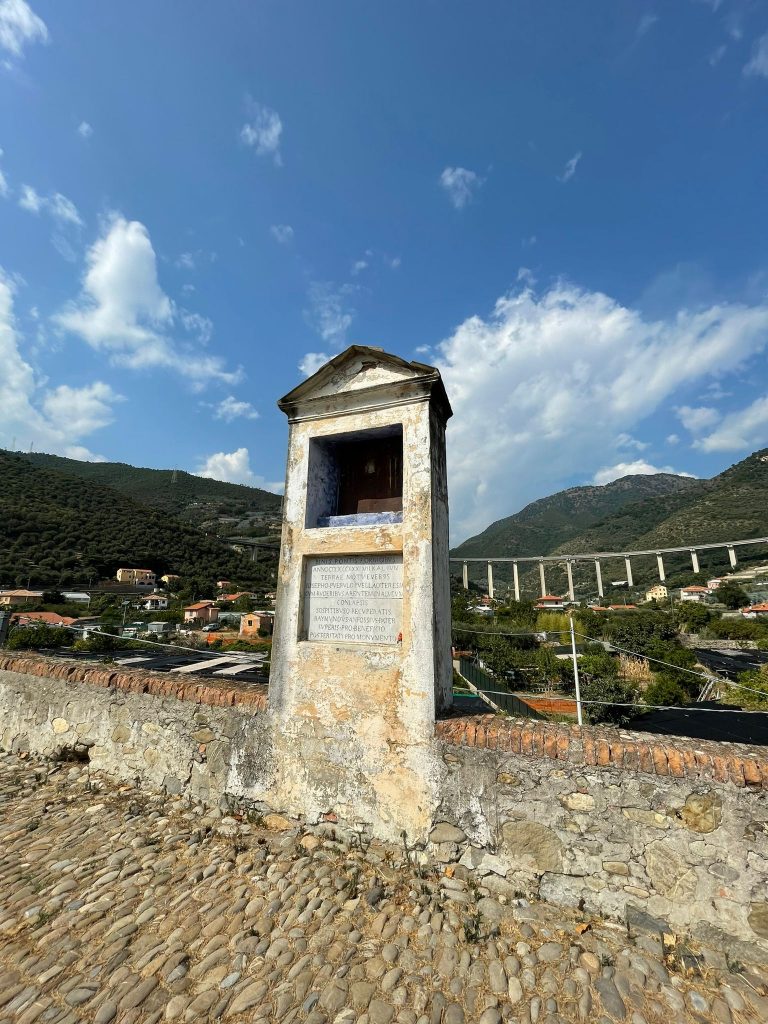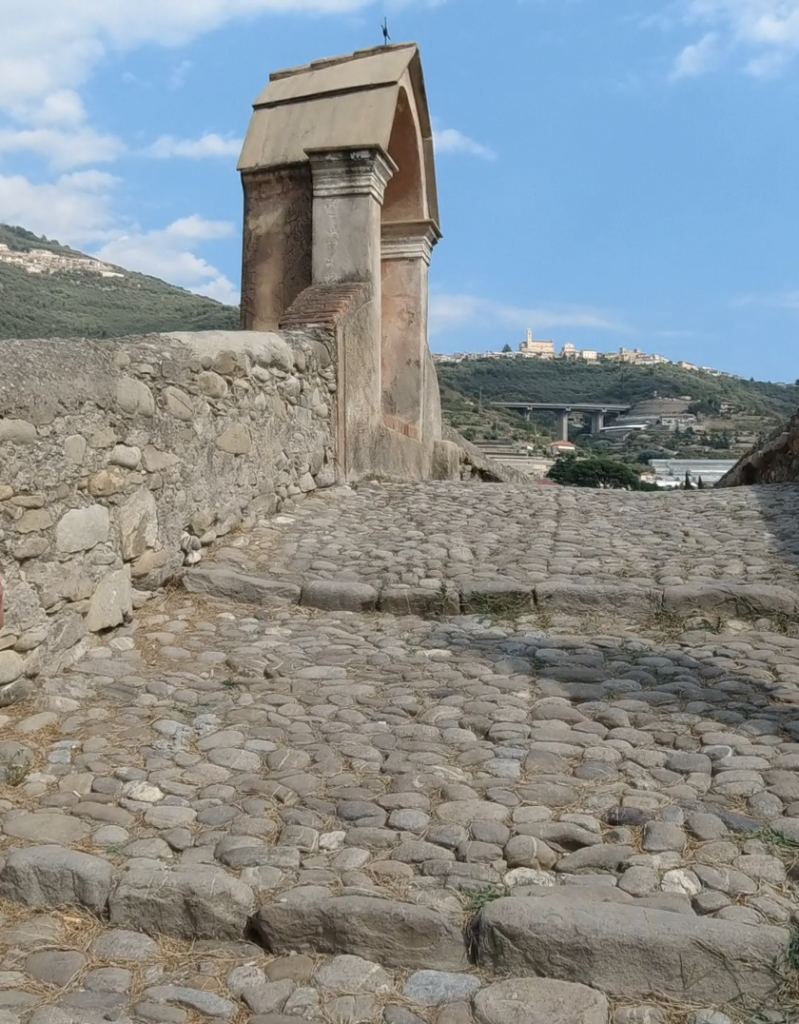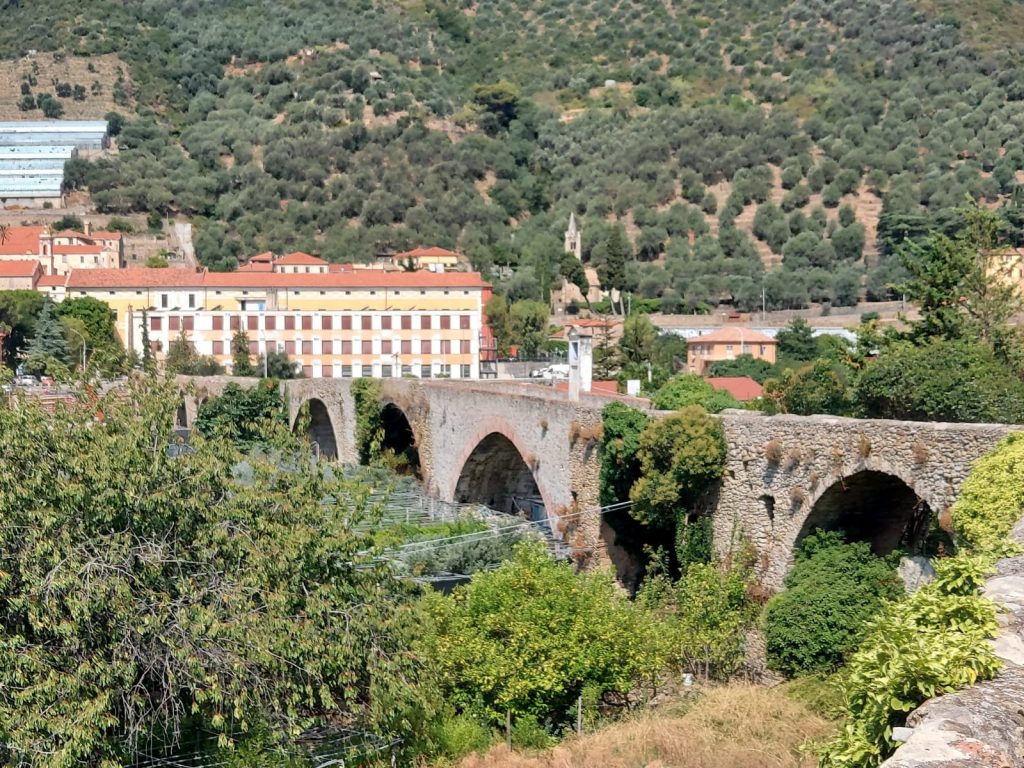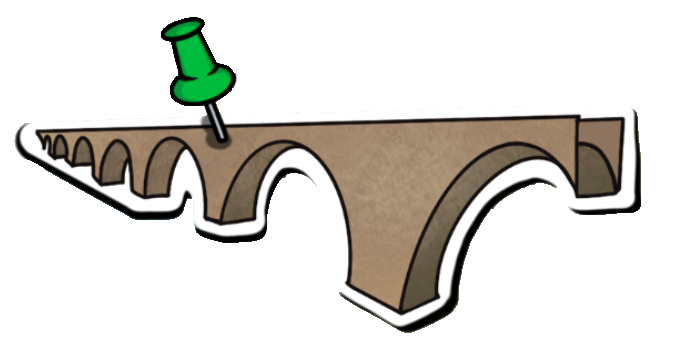
Il Ponte Antico
A walk along the ancient bridge is a must for any tourist visiting the medieval village of Taggia. You’ll be able to walk on the same river pebbles that a thousand women, men and animals have also trodden on in the past. Make yourself comfortable on the peculiar stone seats and enjoy the panorama, facing the hills or the valley, while listening to the stream water from the Argentina flowing beneath you.
But why was such a majestic bridge built for a stream that is mostly dry in the summer season?
This bridge connects the village with traffic on the left-hand side of the stream, headed towards Riva Ligure. The bridge has often erroneously been called “Romano” (Roman) – the oldest part (the first 3 arches on the eastern side) only dates back to the 13th century, whilst the others were probably erected in the following three to four centuries.
The medieval bridge of Taggia wasn’t built all at once. Many centuries ago, the Argentina’s stream flowed close to the hill of Castellaro, and to cross it, one arch was sufficient. Later on, because of torrential floods, the stream moved its course towards the west, and other arches were gradually added. For this reason, where the river was once flowing, you can now find botanical and vegetable gardens. The endeavor was carried on probably by the Benedictine monks. In fact, according to the tradition, before the year 1000 the monks already possessed the area of the Madonna del Canneto, and they had to connect it to their farms, which were located towards Riva Ligure, precisely because in the past there was only one road to Taggia, on the east riverbank.
Lastly, we know that the last two arches of the bridge were raised under the influence of the Dominican Friars.
Now, the bridge of Taggia has fifteen arches. It is approximately 274 metres long, with only the first three arches (54 metres) covering the stream. Researchers believe that this 13th century bridge could be linked to an internal route system, joining the passages of Clavi (Prino valley), Barcheto (Impero valley), Andora (Merula valley) and Albenga (Centa valley).
On the bridge, two niches can be found that have interesting stories to tell. That of the first arch is linked to an important historical memory of the town. It shielded three statues from the ancient Roman parochial church, where they once stood on the facade. It represents an important testimony, as that church was completely rebuilt in the baroque period, preserving very little of its original appearance. Unfortunately, during the last century, somebody realised the value of the three statues and stole them. They are now probably displayed in a private collection, taken away from the community. The niche from the 11th century, on the other hand, tells a story with a happy ending. The year is 1831; two children, who were brothers, were crossing the bridge, laughing and chasing each other – just two kids being kids.
Suddenly, the earth started to tremble beneath their feet, and the span collapsed. Miraculously, the two boys were saved and left completely uninjured. Their father decided to raise a niche on the reconstructed bridge arch as a sign of gratitude.
Foto
Video






